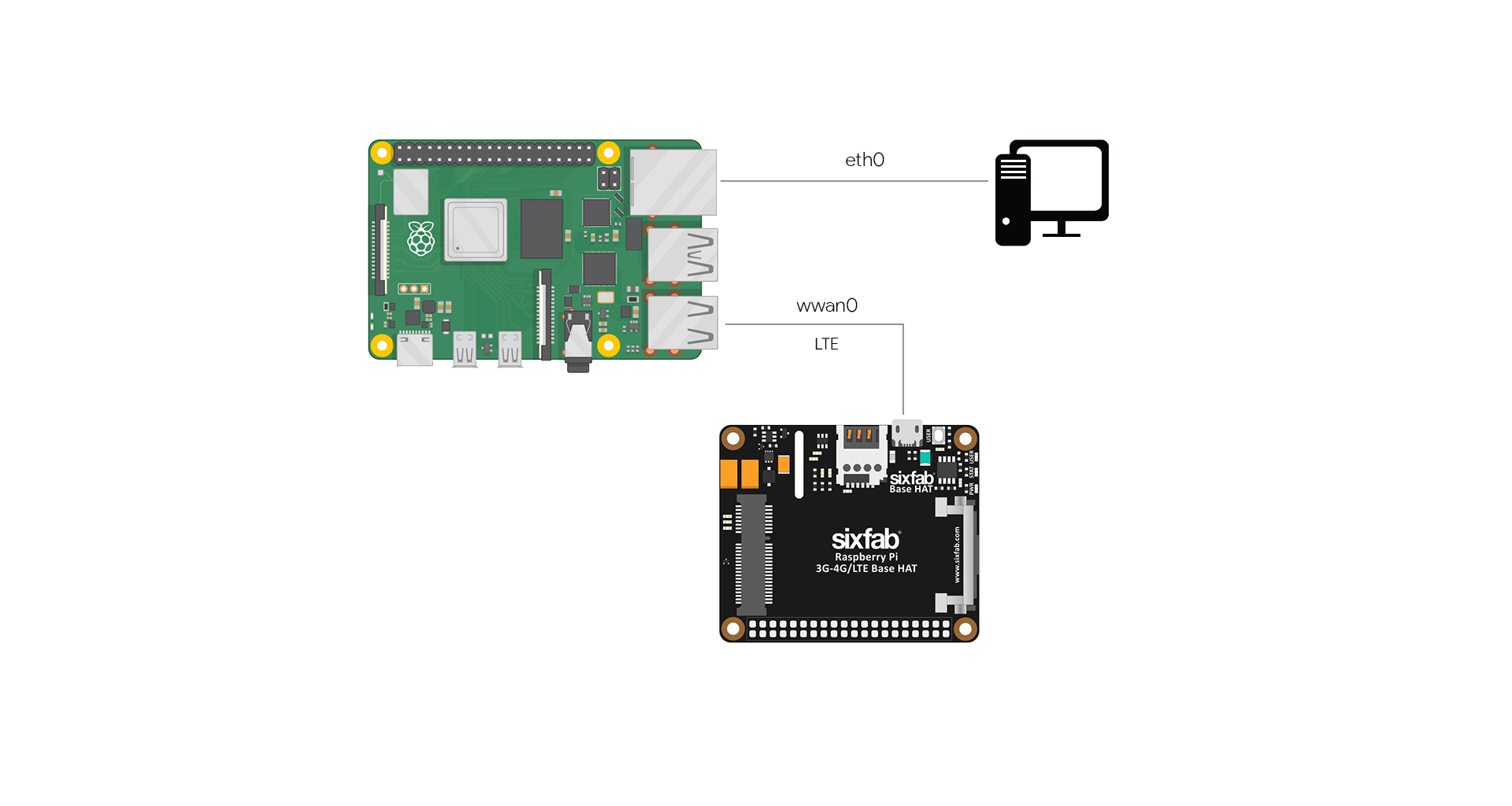The purpose of this tutorial is to share the QMI interface connection to the LAN(eth0).
Before getting started, provide 3 connections on Raspberry Pi.
wlan0: Main internet connection on Raspberry Pi.\ wwan0: LTE modem - QMI interface.\ eth0: LAN interface
You will need to set the relevant parts of the configuration files as follows. If you encounter any errors, make a backup of the files so you can fix them.
First, install dnsmasq: package:
sudo apt-get install dnsmasq/etc/network/interfaces:
#please use different subnet as your wlan0
#eth0:
auto eth0
iface eth0 inet static
address 192.168.2.1
netmask 255.255.255.0
#wlan0:
allow-hotplug wlan0
iface wlan0 inet manual
wpa-conf /etc/wpa_supplicant/wpa_supplicant.conf
metric 0
#wwan0:
allow-hotplug wwan0
iface wwan0 inet dhcp
metric 1000
post-up /etc/wwan2lan.shTurn on NAT IPV4 forwarding. Add at the end of /etc/sysctl.conf:
net.ipv4.ip_forward=1Setup internet connection sharing in iptable:
sudo iptables -t nat -A POSTROUTING -o wwan0 -j MASQUERADEConfigure it to load on reboot by first saving it to a file:
sudo sh -c "iptables-save > /etc/iptables.ipv4.nat"Then create a 'hook' file with a line to restore the IP tables:
sudo nano /lib/dhcpcd/dhcpcd-hooks/70-ipv4-natAdd:
iptables-restore < /etc/iptables.ipv4.natThe following script makes the real deal, so it's important:
sudo nano /etc/wwan2lan.sh#!/bin/bash
sleep 10
# define interfaces
LOCALIF="wlan0"
WWANIF="wwan0"
LANIF="eth0"
#get gateway IP address
LOCALGATEWAY=$(ip route show 0.0.0.0/0 dev $LOCALIF | cut -d\ -f3)
WWANGATEWAY=$(ip route show 0.0.0.0/0 dev $WWANIF | cut -d\ -f3)
#local traffic gets one private default route:
ip rule add iif lo priority 48000 table 2
ip route add default via $LOCALGATEWAY dev $LOCALIF table 2
#eth0 traffic gets another private default route:
ip rule add iif $LANIF priority 48010 table 3
ip route add default via $WWANGATEWAY dev $WWANIF table 3
#delete shared gateways
ip route delete default dev $LOCALIF
ip route delete default dev $WWANIF
#enable wwan0 traffic from localhost if we specify the adapter
#(example: curl --interface wwan0 google.com)
INETADDR=$(/sbin/ifconfig $WWANIF | grep 'inet addr:' | cut -d: -f2 | awk '{ print $1}')
ip rule add from $INETADDR/32 iif lo priority 47010 table 3Setup dnsmasq, if you used different subnet for eth0, you must change it here as well:
/etc/dnsmasq.conf:
nterface=eth0 # Use interface eth0
listen-address=192.168.2.1 # Explicitly specify the address to listen on
#bind-interfaces # Bind to the interface to make sure we aren't sending things elsewhere
#server=8.8.8.8 # Forward DNS requests to Google DNS
domain-needed # Don't forward short names
#bogus-priv # Never forward addresses in the non-routed address spaces.
dhcp-range=192.168.2.1,192.168.2.50,12h
# Assign IP addresses between 192.168.2.1 and 293.168.2.50 with a 12 hour lease time
log-queriesThat's all. You have successfully shared LTE (wwan0) connection to your LAN (eth0) port.

